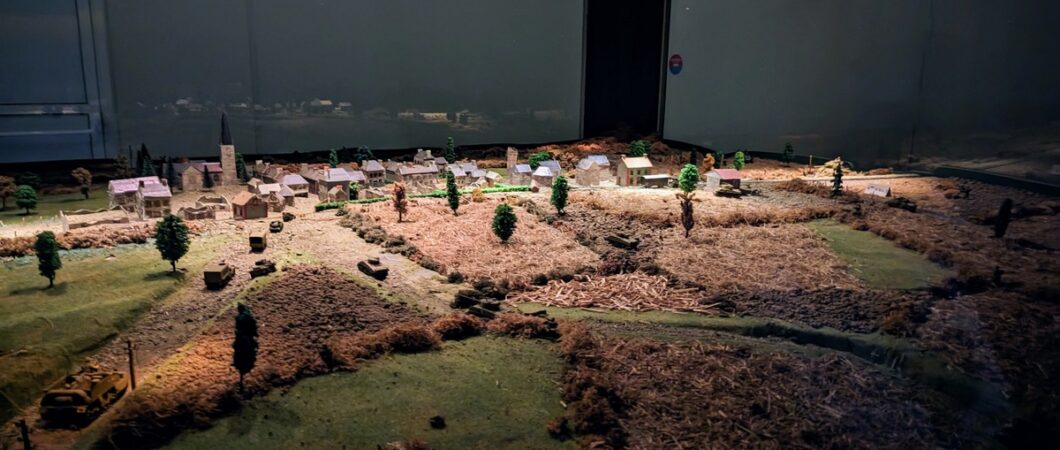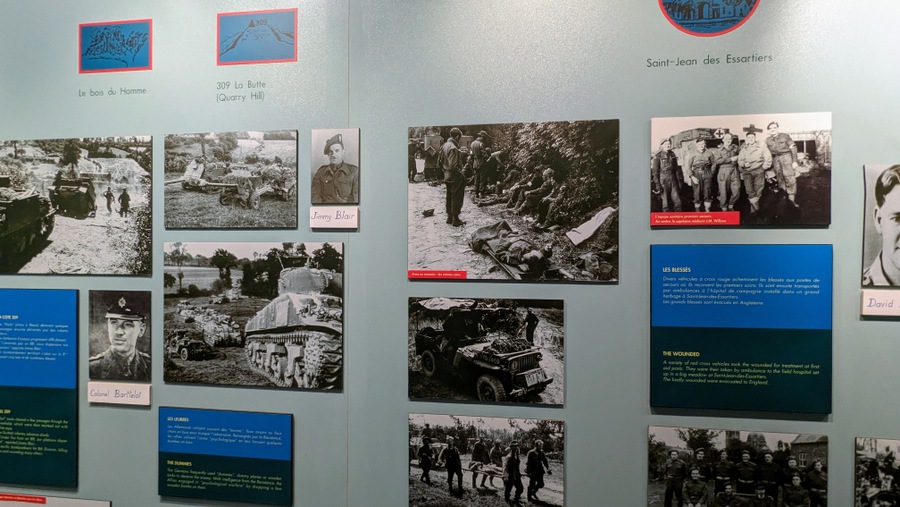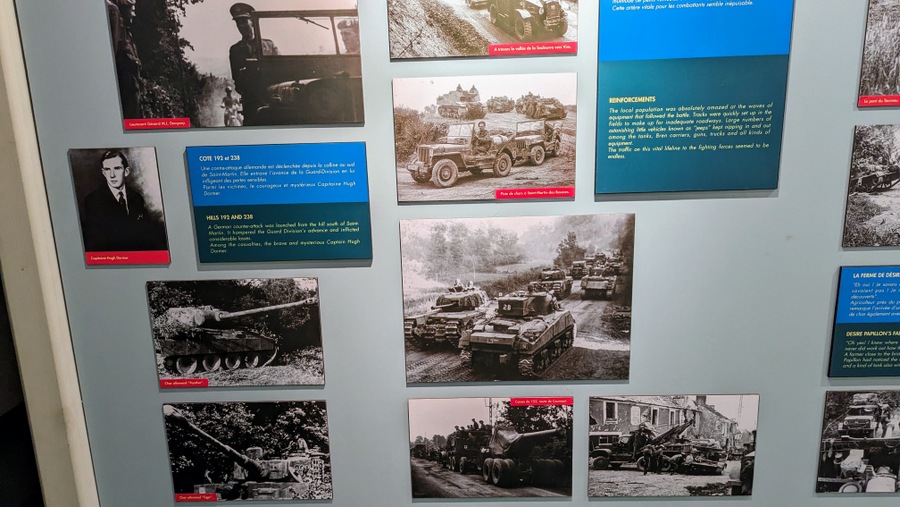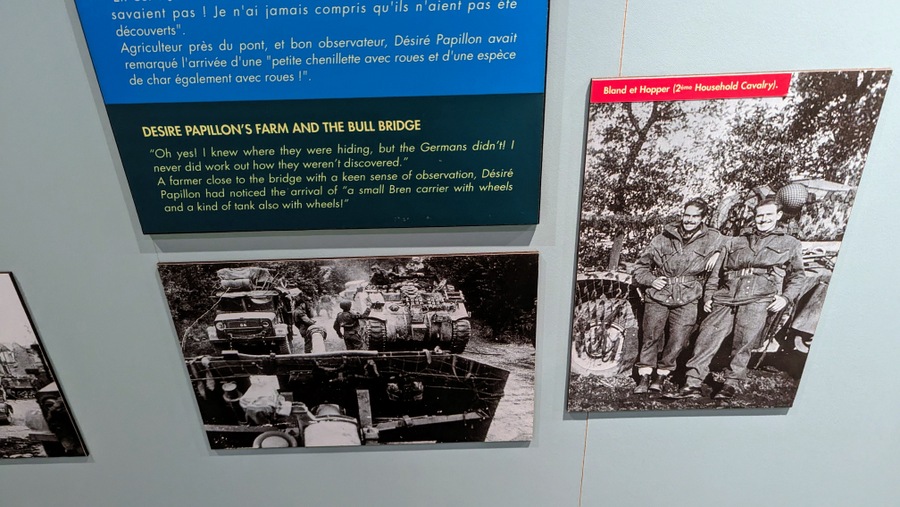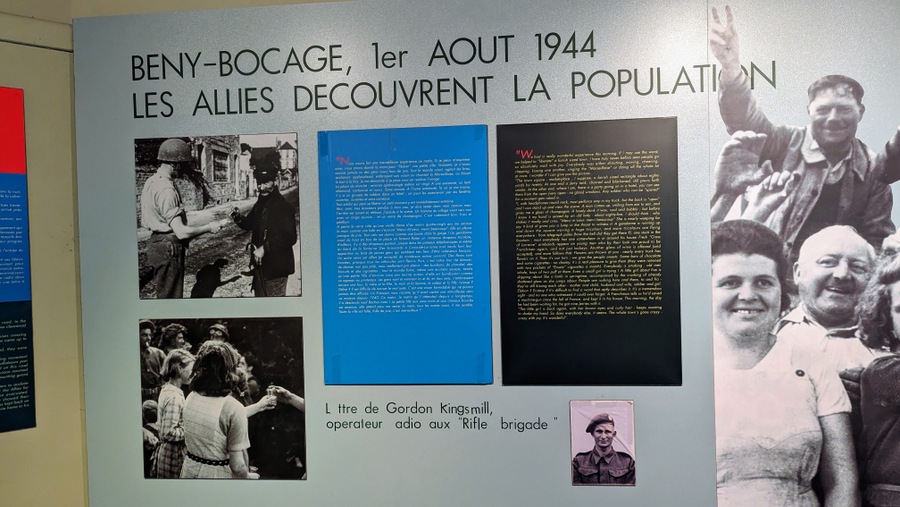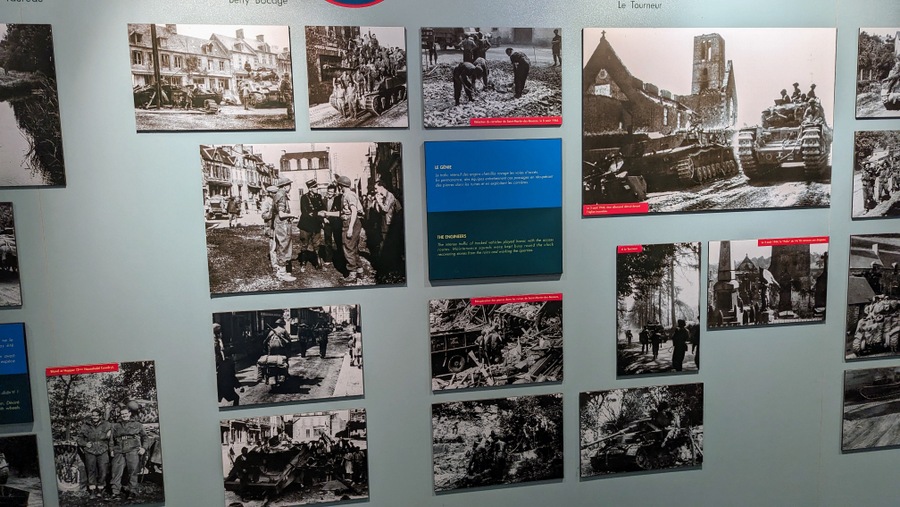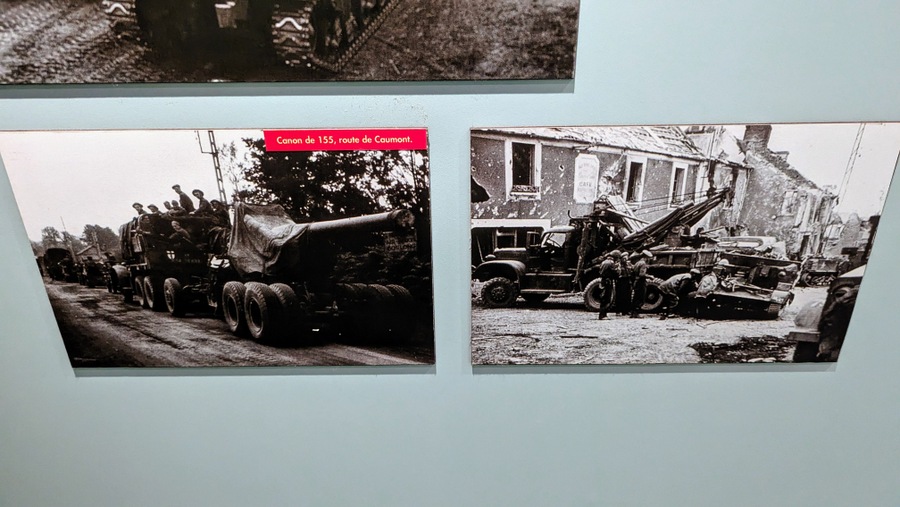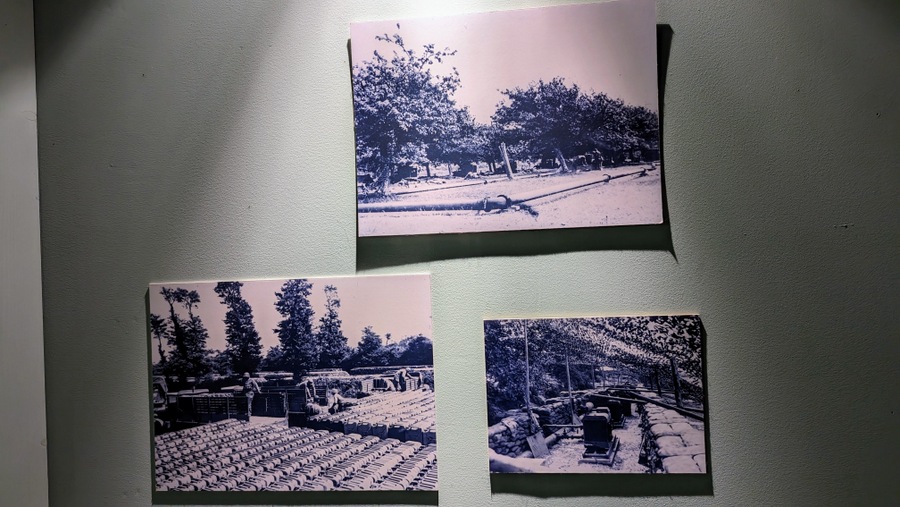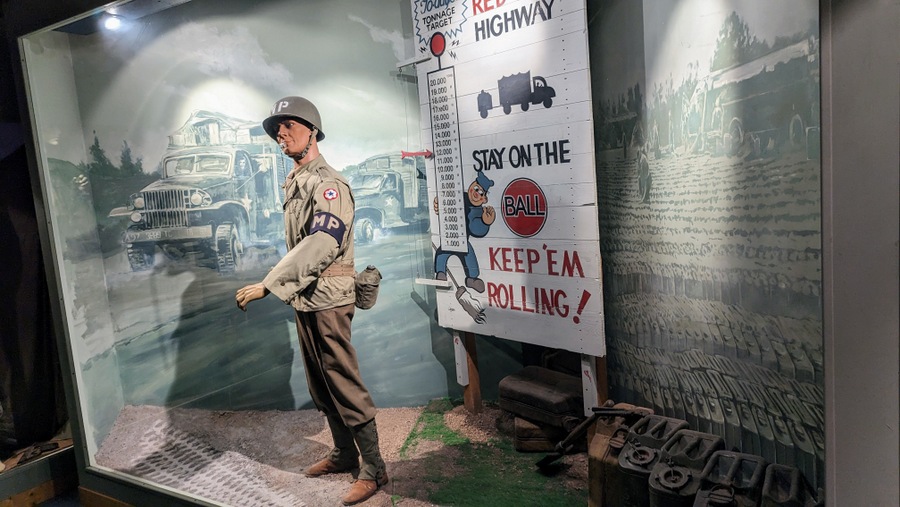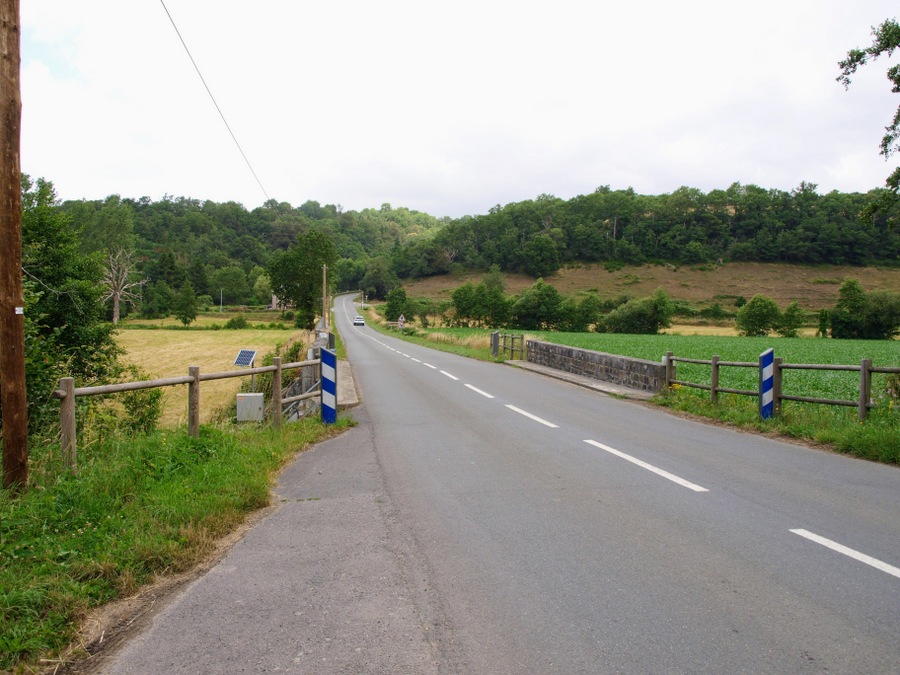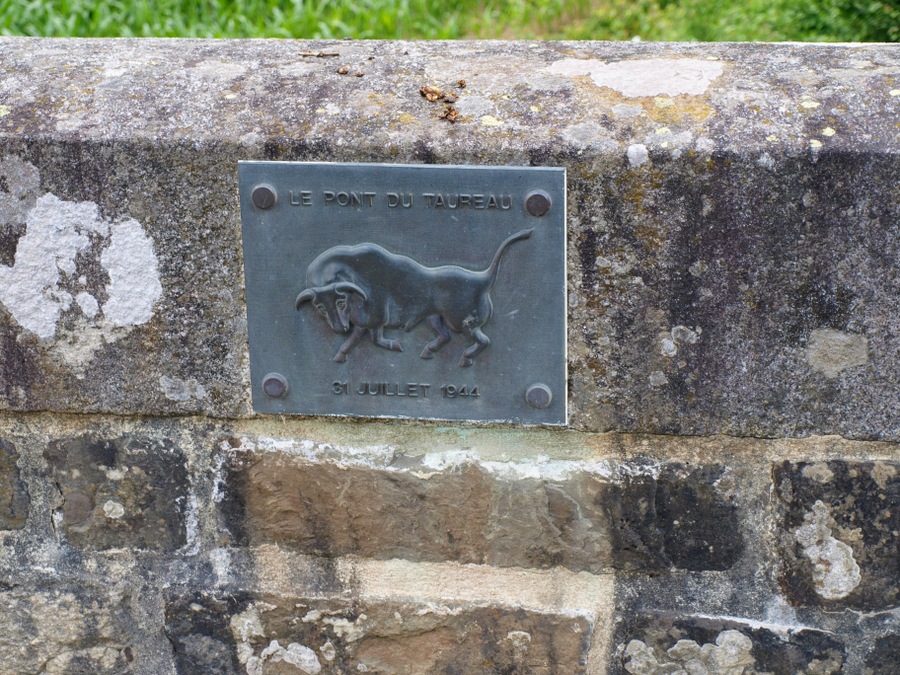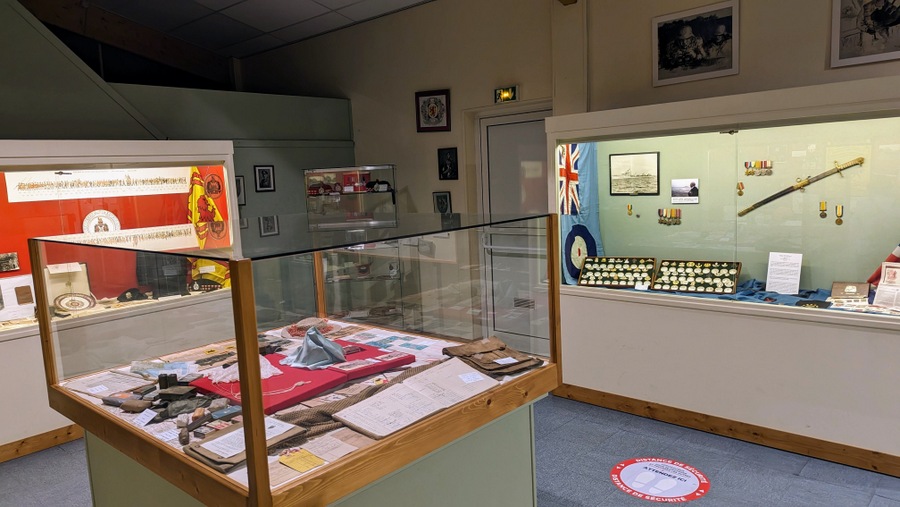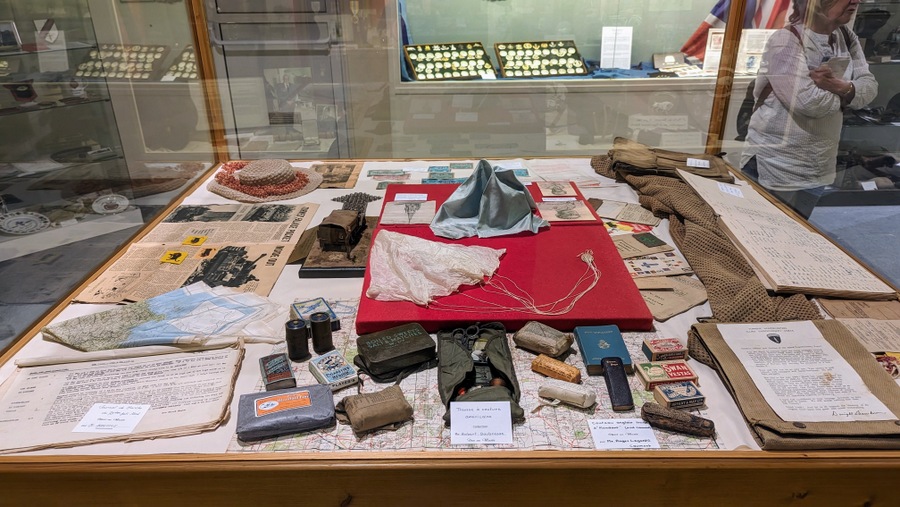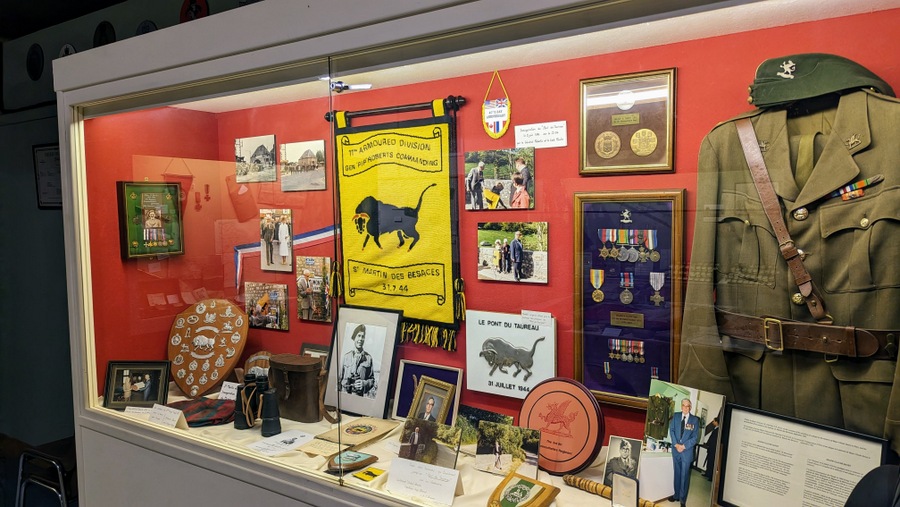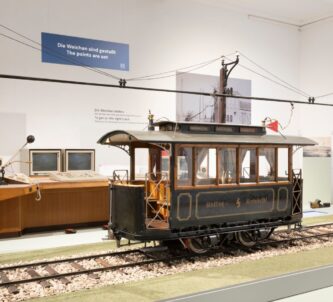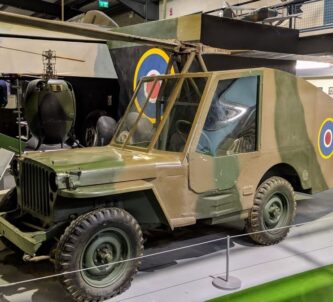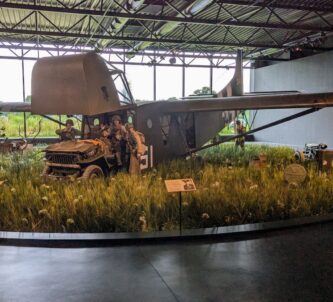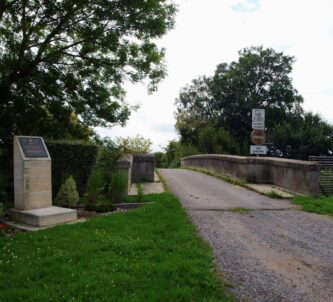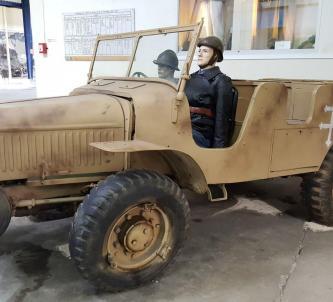It’s proper name, in French, is La Musée de la Percée du Bocage, which they themselves translate into the ‘British Breakout from Normandy Museum’. In our guidebook, we call it the ‘Bocage Breakout Museum’, which I think is a simpler name.
The museum, which celebrates its 30th anniversary this year (2004), is located on the main street of Saint-Martin-des-Besaces in the commune of Souleuvre en Bocage. Enthusiastically curated by Billy Lebond, the museum focuses on the British who fought their way through the bocage during Operation Bluecoat in late July 1944, and liberated Saint-Martin-des-Besaces, at some cost to themselves.
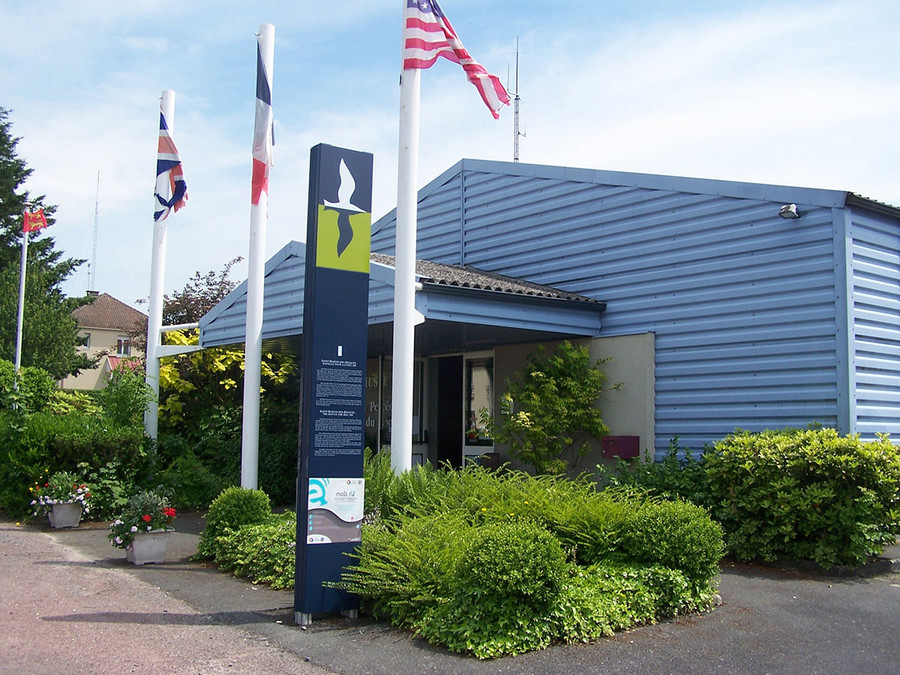
In the lobby are the remains of a Daimler Dingo scout car which was ambushed on 13 Aug 1944 by the Germans near Lassy*, 15 kms southeast of Saint-Martin-des-Besaces. Lt Jack Howdle and his driver Fred Reed were in the lead Dingo of D Squadron, Inns of Court Regiment on reconnaissance patrol with the British 11th Armoured Division, heading for Tinchebray-Bocage to the south, when it was suddenly hit by what Lt Howdle later thought was a Raketenwerfer 43. Fred Reed was killed instantly. Howdle was blown out of the vehicle and managed to survive. This wreckage is all that remains of the Dingo. A fortnight later Howdle was courageously driving through enemy positions in the town of L’Aigle, for which he received the Military Cross.
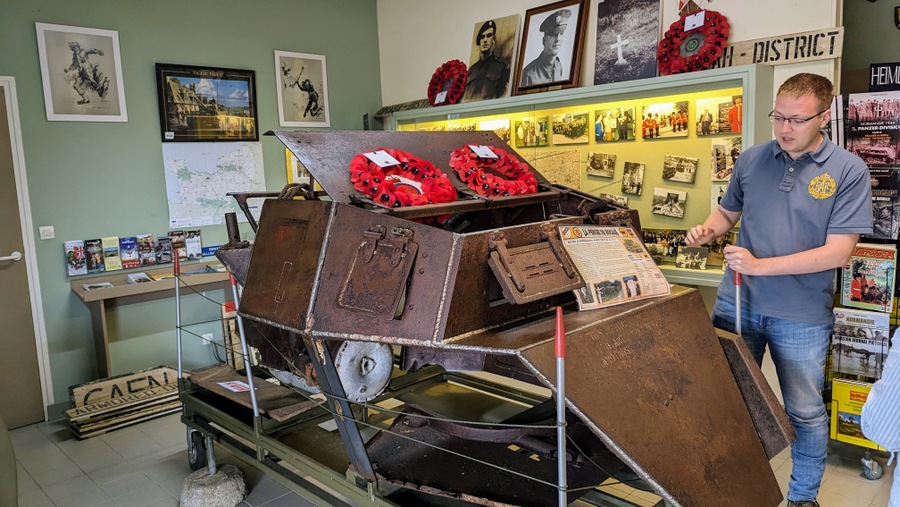
The museum is not large, but it makes good use of its eight galleries by turning them into a 45-min guided tour; as you enter each gallery a soundtrack and focused lighting explain what you are looking at.
This system has its pros and cons. I often find, when I return from a trip and start working through my notes and photos, that I hadn’t fully recognised the significance of a particular artefact. By directing your attention, the ‘guiding hand’ reduces the chance you will miss something important. On the other hand, you are still under pressure to move onto the next gallery, even if the sound and lighting in that next gallery won’t trigger until you get there. So you are not moving at your pace; you might want to linger on an object or set of photos. If this were a larger museum with more rooms, I think the ‘guiding hand’ might, after a while, become a little over bearing, but I’m not criticising it. In fact I rather welcomed it.
There is one other element. Language. It might be there is a French group going through the museum, in which case you’ll have to wait for an English tour. That said, it’s not a busy museum. The chances are, that you are the only visitor(s) when you are there.
The galleries start off with the occupation and life under the Nazis, but then quickly moves on to D-Day and what that meant for the local population.
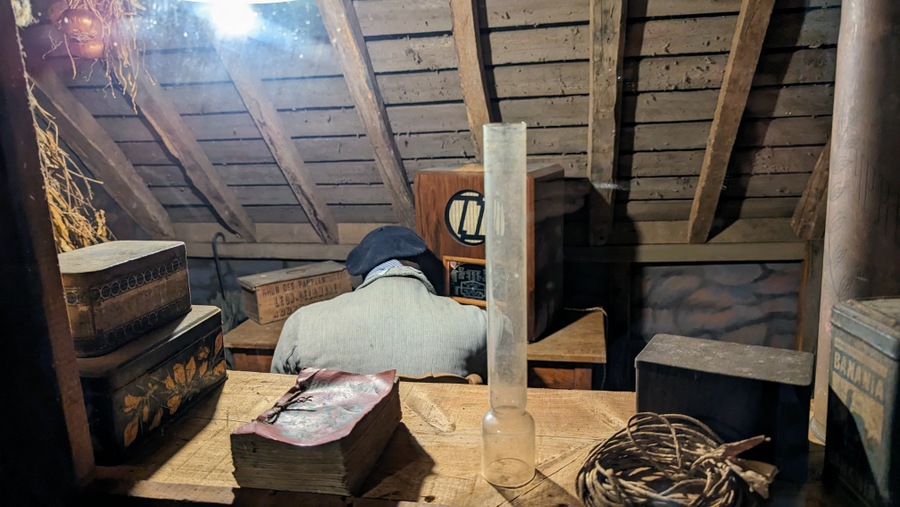
This is not a museum full of military equipment or large items like vehicles. Most of the displays are photographic and there are many photos that you won’t see elsewhere. Some are really fascinating.
Also, a lot of effort goes into explaining Operation Bluecoat and the 11th Armoured Division’s role in it. Bluecoat was one of the elements that led to the encirclement and squeezing of the German 7th Army in the Falaise Pocket in August 1944. I think this map gives a really clear view of the advance, and in particular, the lucky discovery of the unguarded ‘Bull Bridge’.
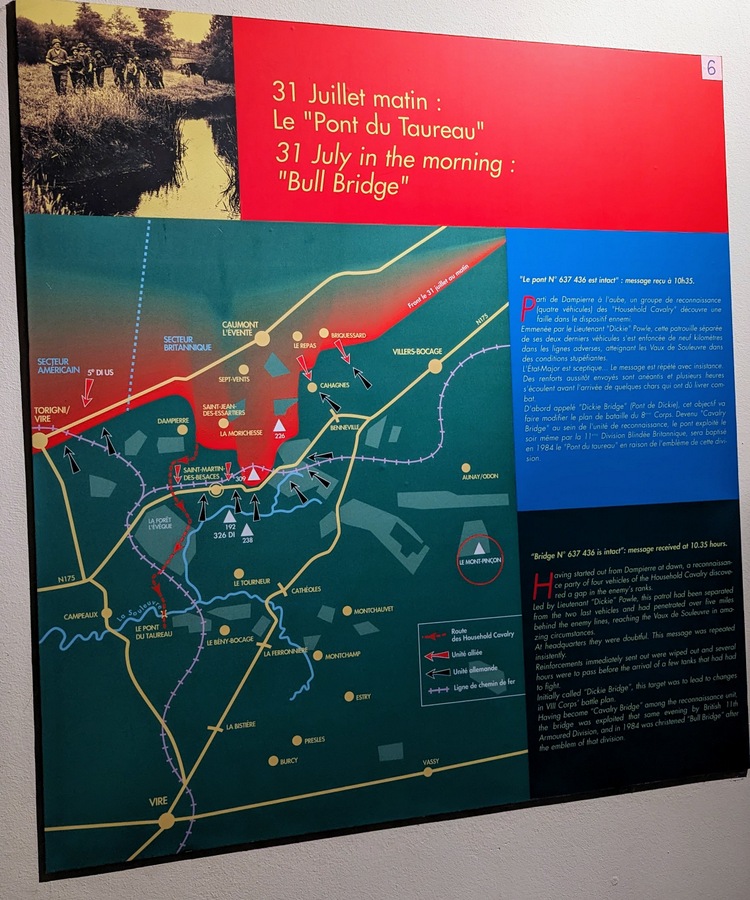
With the St Lô – Caen railway passing through, Saint-Martin-des-Besaces was considered an important strategic village by the Germans, who cleared its inhabitants out and set up a defensive garrison. While it was being assaulted by the British, the 2nd Household Cavalry on reconnaissance patrol, discovered an undefended road around to the south-west of Saint-Martin-des-Besaces, leading to a bridge over the Soulevre river.
It turned out, the road and bridge were in a gap between two enemy units, the 326th Infantry Div and 3rd Parachute Regiment, who were in dispute over who was supposed to be responsible for their defence.
The lightly armed Household Cavalry quickly set up defences around the bridge and called for support, which arrived two hours later. The bridge gave 11th Armoured Div a springboard to quickly advance south, and became known as ‘Bull Bridge’.
One room is taken up with a large animated map, telling the story of the battle for Saint-Martin-des-Besaces.

The final gallery houses personal items, many of which have been gifted to the museum by veterans and their families.
Better than my poor images, the museum has its own short promotional video…
D-Day Normandy Posts
* You won’t find it on a map. Lassy is a former commune that was merged into the new commune Terres de Druance in 2017.
Declaration: I was on a self-drive research trip. Museum entry was complementary.
Factbox (2024)
Website:
La Musée de la Percée du Bocage
Getting there:
5, rue du 19 Mars 1962
Saint-Martin-des-Besaces
14350 Souleuvre-en-Bocage
France
On the D615 in the middle of the town.
Entry Price:
| Adult | € 6.00 |
| Child 6+ | € 2.00 |
| Child under 6 | Free |
| Groups | (min 10 people) €4,00 adult / €2.00 child |
Opening Hours:
| 11.00am – 18.00pm | |
| Mar/Apr | 30 Mar-01 Apr, and every weekend in Apr |
| May | 01-05 May, 08-12 May, 18 20 May, 25-26 May |
| Jun | 01-09 Jun, then weekends from 15 to 30 Jun |
| Jul/Aug | All days 02 Jul-31 Aug except Mondays |
| Sep | Every weekend |
| Oct/Nov | 31 Oct – 03 Nov, and Monday 11 Nov |

